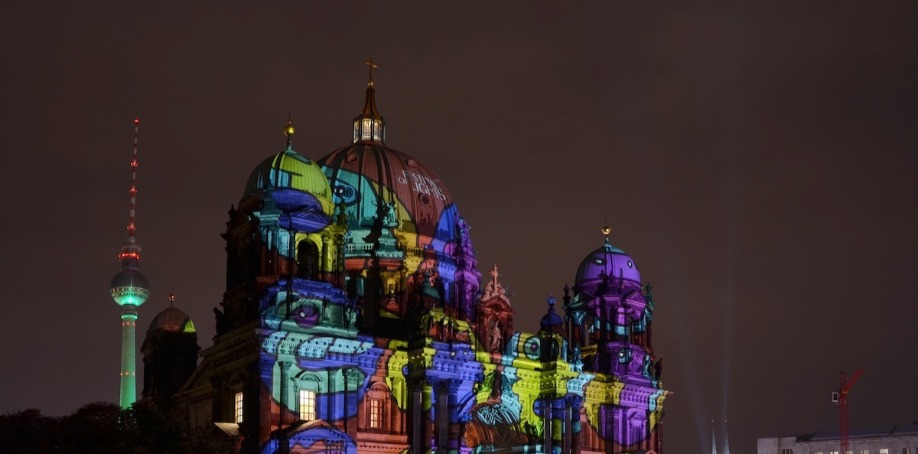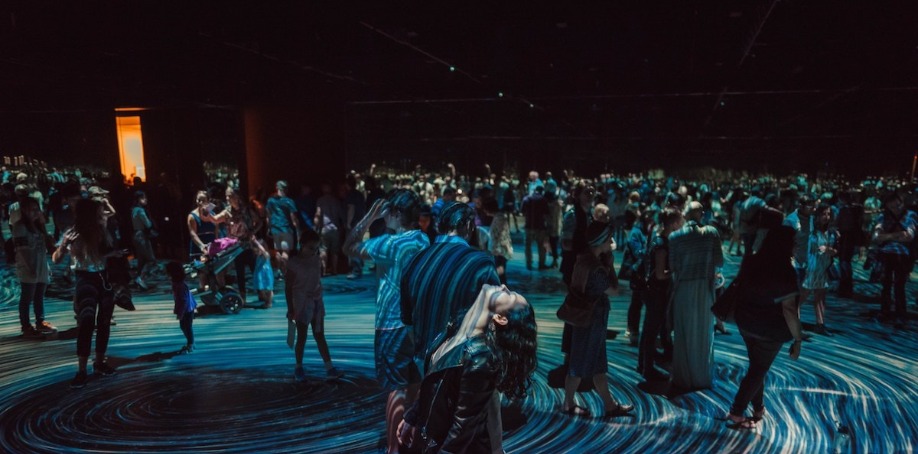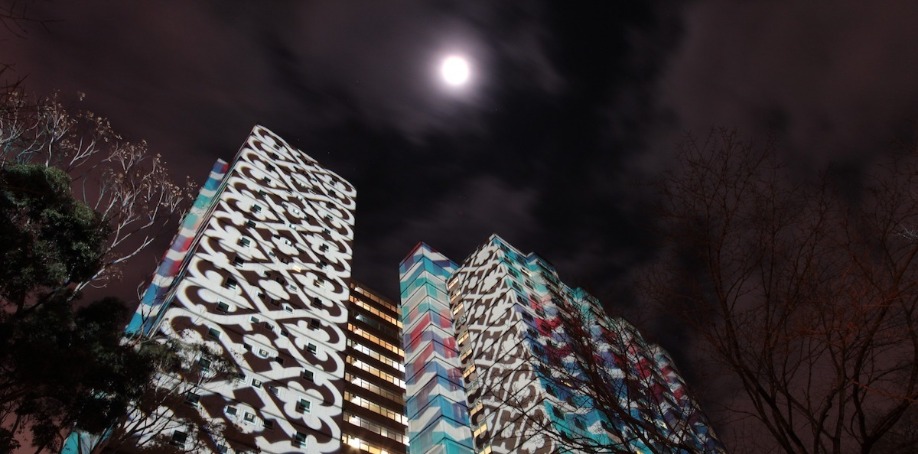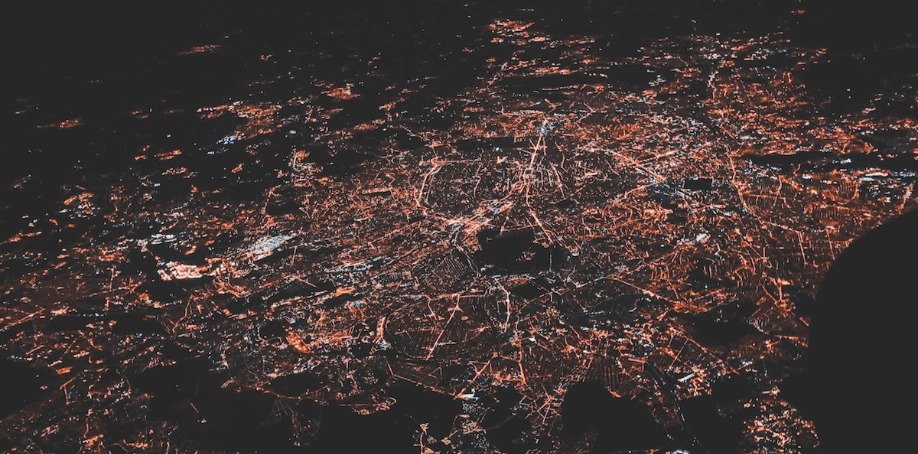
Architectural marvels like the Sydney Opera House and the Guggenheim Museum Bilbao may be iconic, but projection mapping is changing the way people can view these attractions entirely.
Projection mapping uses projection technology to simulate three-dimensional effects on surfaces or objects, explains AV Stumpfl CEO Tobias Stumpfl.
Not only is it transforming tourist attractions, but it is also transforming the AV industry. “For almost a decade, industry pundits have been predicting the death of the projector,” says rAVe's Jacob Blount. But the projector is now being viewed as the leading display technology, and a global forecast by Markets and Markets shows it's driving the market.
In fact, this report places the 2018 projection mapping market at USD $1.37 billion, and its expected to reach $3.56 billion by 2023.
The demand for projection mapping shows no signs of slowing, making it essential for AV experts to understand what the technology is, how it has changed and just what is possible.
Projection Mapping Explained
Projection mapping, also known as 3D projection mapping or video mapping, is the art and science of projecting imagery onto the surfaces of physical spaces and objects, says Chicago Projection Mapping. This differs from traditional projection, which tends to display images on a flat screen.
Software is an essential part of the process, as the image must be mapped correctly to the contours of the surface on which it will be projected. Frank Gatto & Associates' Mark Battalini explains that the effect is achieved by using a pre-production process where images are fitted onto a 3D model of the building. This allows the projection to wrap the images around the physical building and give the appearance that they are part of that structure.
The quality of projectors is also important, says Mark Wadsworth, international marketing manager at Digital Projection. The advent of 4K SSI (solid state illumination) projectors has been transformative. Most high-end projectors now include warp functionality, which is crucial for projection mapping.
“We're now seeing projectors in the market, capable of up to 30,000 lumens, that are perfectly suited to large projection mappings on all kinds of irregular surfaces in almost any environment.”
Projection mapping is more than just the use of software and projectors, AV Network's Kelleigh Welch says. “In big cities like New York or Los Angeles, project managers have to factor in every minor detail, from hiring the right staff for his or her team, securing all the legal permits with the city, and analyzing the environment and surface where the images will project onto.”

A Powerful and More Accessible Technology
Projection mapping was once confined to big-budget productions, but recent advances in projector technology mean that it is within reach of virtually anyone, says Ramzi Shakra, a product manager at Epsom. Prices have continued to fall, too, and reasonably priced PCs and Macs have the capability to render, host and serve video.
“Higher lumen output projectors, professional mapping features, and smaller form-factor design are contributing significantly to growth in new markets,” says Danny Firpo, managing partner of All of It Now. Epson in particular has produced a number of projectors that provide the technology needed for high-quality projections at an affordable price point.
Due to this increase in accessibility, event managers and AV installers can now do much more with the technology. As digital storyteller Christina Green explains on Event Manager Blog, technology now exists to project onto items that move in an unpredictable way. The ability to tell a story across a surface or object that isn't fixed significantly increases an event planner's possibilities. The technology dynamically adjusts 1,000 times per second, with a 3-millisecond delay. To the human eye, this appears instantaneous.
Historically, projection mapping technology was dependent on servers. Today, computing power within projectors is better equipped for modern uses, says Carl Rijsbrack, VP of events at Barco.
“The increased computing power inside projectors allows this combination to step up to the demanded performance levels both in content delivery, latency, picture accuracy, alignment and warping.”
Projected augmented reality has also become a possibility thanks to technology like Lightform. The design software works with any projector allowing users to create immersive experiences in almost any place imaginable.
“Unlike the current forms of AR and VR, projected AR can be seen with the naked eye,” says rAVe founder Gary Kayye. With projection mapping, there's no need for a headset.

Three Examples of the Power of Projection Mapping
"Projection mapping enables you to create almost any conceivable visual effect, whether it's as simple as your logo in three dimensions rotating on a wall, or as complex as your audience being taken on a spaceship through the Milky Way,” says Encore Event Technologies.
As exemplified in the three case studies below, there isn't much that AV and creative teams can't achieve with projection mapping.

Concorde Flies Again
Alpha Foxtrot — the last of 20 Concorde supersonic jets — has been brought back to life thanks to the work of Projection Artworks and four Christie D13WU-HS laser projectors.
Projection Artworks have created a 12-minute animation combining real-life footage, exclusive interviews and special effects that are mapped onto the right side of the aircraft. Creating something that looked exceptional was crucial, according to Gavin MacArthur, a creative director at Projection Artworks.
“People put a considerable amount of time into the Concorde project. It was a beautiful plane, you can't spoil it by putting bad content onto it, you've got to do it justice and make sure the information is technically correct.”
The World's Largest Permanent Projection Mapping Display
In 2018, Obscura launched what has been called the largest permanent projection mapping display on Chicago's theMART.
Hired by the Vornado Group to create an attraction that would celebrate the heritage of the building and contribute to the revitalization of the Chicago Riverwalk, Obscura worked with contemporary artists Diana Thater, Xheng Chongbin, Jason Salavon and Jan Tichy to create a unique projection mapping experience.
To bring these designs to life, Obscura used 34 Christie Boxer 4K30 projectors that beam over 1 million lumens onto the building's facade.
“The projectors are housed in an architecturally integrated custom enclosure with a glass curtain wall and all the required mechanical and electrical systems,” says Obscura's Nathan Houchin.
Pushing Boundaries with Light Odyssey
Light Odyssey is a 90-minute show that combined projection mapping with a live performance by the BBC Philharmonic Orchestra to mark the launch of Lightpool Festival 2018.
Conceived by Alex Rinsler, executing the project required collaboration between QED Productions, the BBC Philharmonic Orchestra, the Guildhall School of Music and Drama and a team of digital artists. It also took 24 projectors, six Panasonic RZ31K and eight RZ21K laser projectors, which were placed throughout Blackpool's Empress Ballroom.
“When Alex first approached QED with the idea for Light Odyssey it was clear that the scale of the creative ambition was as great as the technical challenges involved,” says QED director Paul Wigfield. “It was an opportunity to push the boundaries of projection mapping and to produce a unique and very special entertainment experience.”
These three examples provide a taste of what can be achieved with projection mapping. But 7thSense Design CEO Matt Barton is very clear about where projection mapping is heading.
“The combination of motion and projection mapping has huge potential, most of which has yet to be explored. Projection mapping will always need to stay on top of other display trends such as frame rate and resolution improvements – as expectations rise, projection mapping will need to stay at the top of its game too.”
Images by: Pixaline, PTeknik, Kevin Laminto


